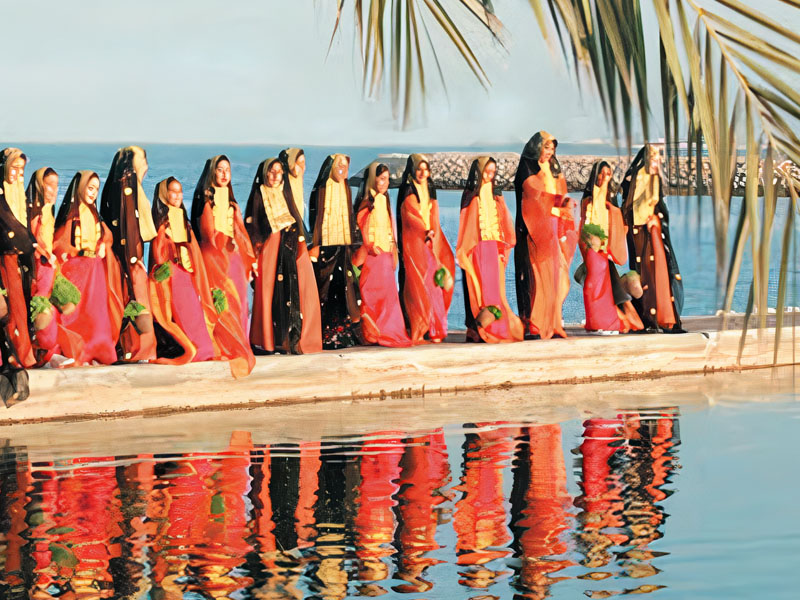Samples of the Most Important Forms of Arab Folk Dance
Issue 1

DR. Husam Muhsib
This paper reviews diverse multitudes of motivations behind evolution of dance and its content. It indicates that practice of forms of folk movements “dance” is deep rooted in Arab environment. It was encouraged and patronized. Dance was, basically, a collective ritual expressing a type of social life to its practitioners. Dance was not exclusive to a specific social sector as it is a state of collective participation more than an individual act. However, some customs in some societies transformed it, with the passage of time, into just a hobby and practice.
The term “folk dance” is generally used to describe forms of well known dance between various peoples that are from similar origins inherited from generations to others. That is why folk dance is generally considered an important means of translating feelings and beliefs of peoples.
This essay stems from the idea that Arab arts interexchange influence as they are of common characteristics and share a common cultural heritage that makes Arab societies more solid and powerful in confronting elements of disintegration that affects Arab societies as a result of penetration of foreign cultures
This study aims at monitoring elements of unity between Arab countries through folk dance. Some of these dances are common in a number of countries such as Gulf Dance “Raqss alkhalij” that flourished in Upper Egypt and in some countries in the Arabian Gulf; and the Araishi Debkeh of which Alarish is known for and so is Syria. Another example is the Zaar ritual common in Egypt, the Sudan and Gulf countries. The mode of movement performance of the Sufi Circles in Egypt, the Sudan, Syria and North Africa performed during festivities and religious celebrations. The researcher attributes causes of similarities in these folk dances to in Arab countries to a number of factors among which is geographical integrity and the nonexistent of geographical barriers in addition to inter-trade and pasturing by nomadic tribes and above all unity of language, belief and cultural environment.
The author discusses the most important forms of folk dances in Egypt and other Arab countries that have some ritual folk aspects such as the Zaar, the Thikre, Nubian Dance, Bedouin Dance , the Debkeh and ‘Ardhah in the Arabian Gulf Region in addition to other dances like Alkhamari , the Samri, the Fraisch, the sea Ardhah and Desert ‘Ardhah . .etc.
The writer concludes by saying that in order to achieve our aspirations we have to have some recommendations that may help us get out of our cultural isolation and our individual egoism by paying more attention to our cultural heritage by studying our folk heritage to discover common factors like history, dialects and beliefs that unite Arab countries. If we bear in mind that humanism is a universal phenomenon, we have to pave the way for this ideal by spreading international folklore, by translating folk tales of other peoples. Culture is the property of all peoples and each human being has the right to enjoy what human minds produced.



































































